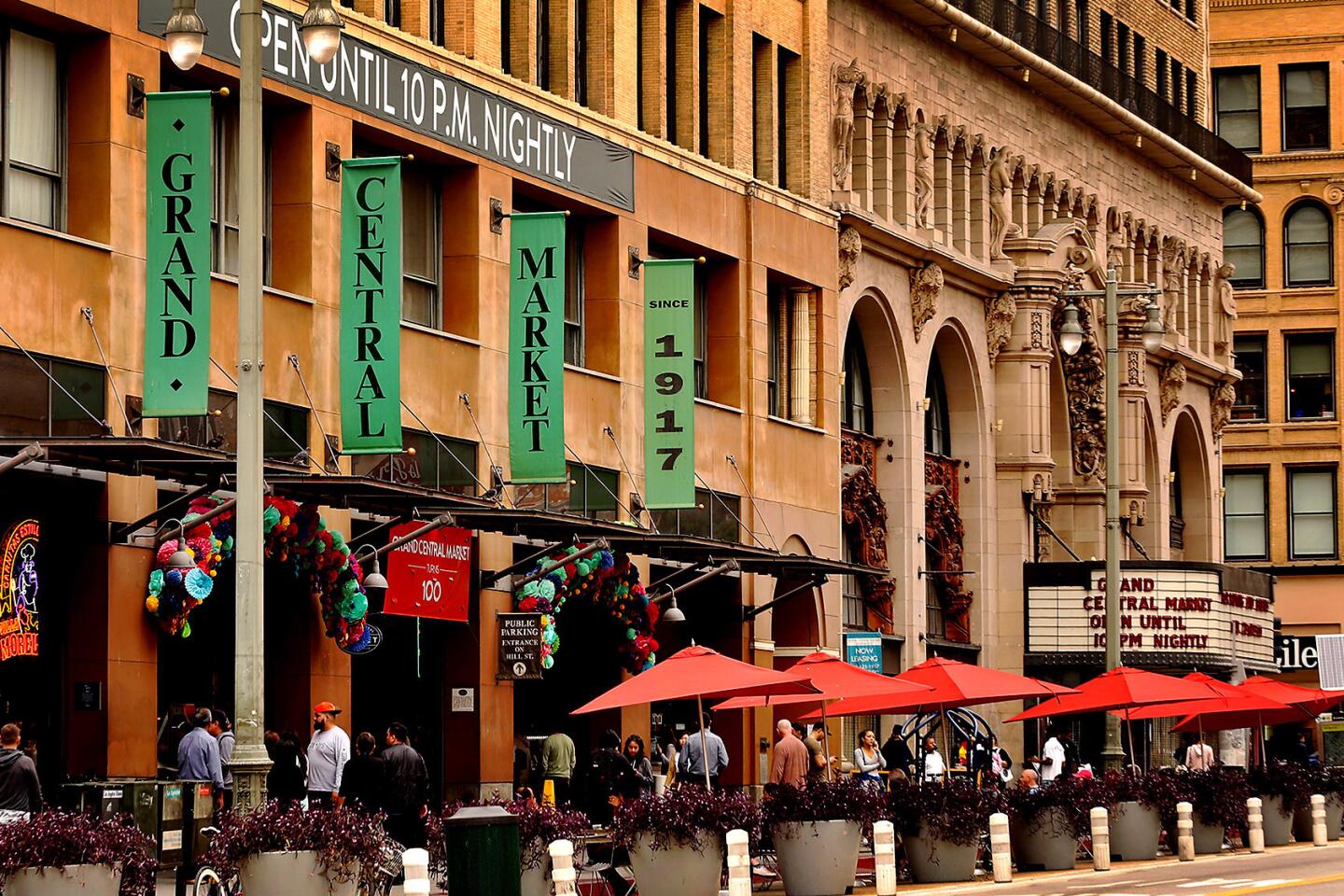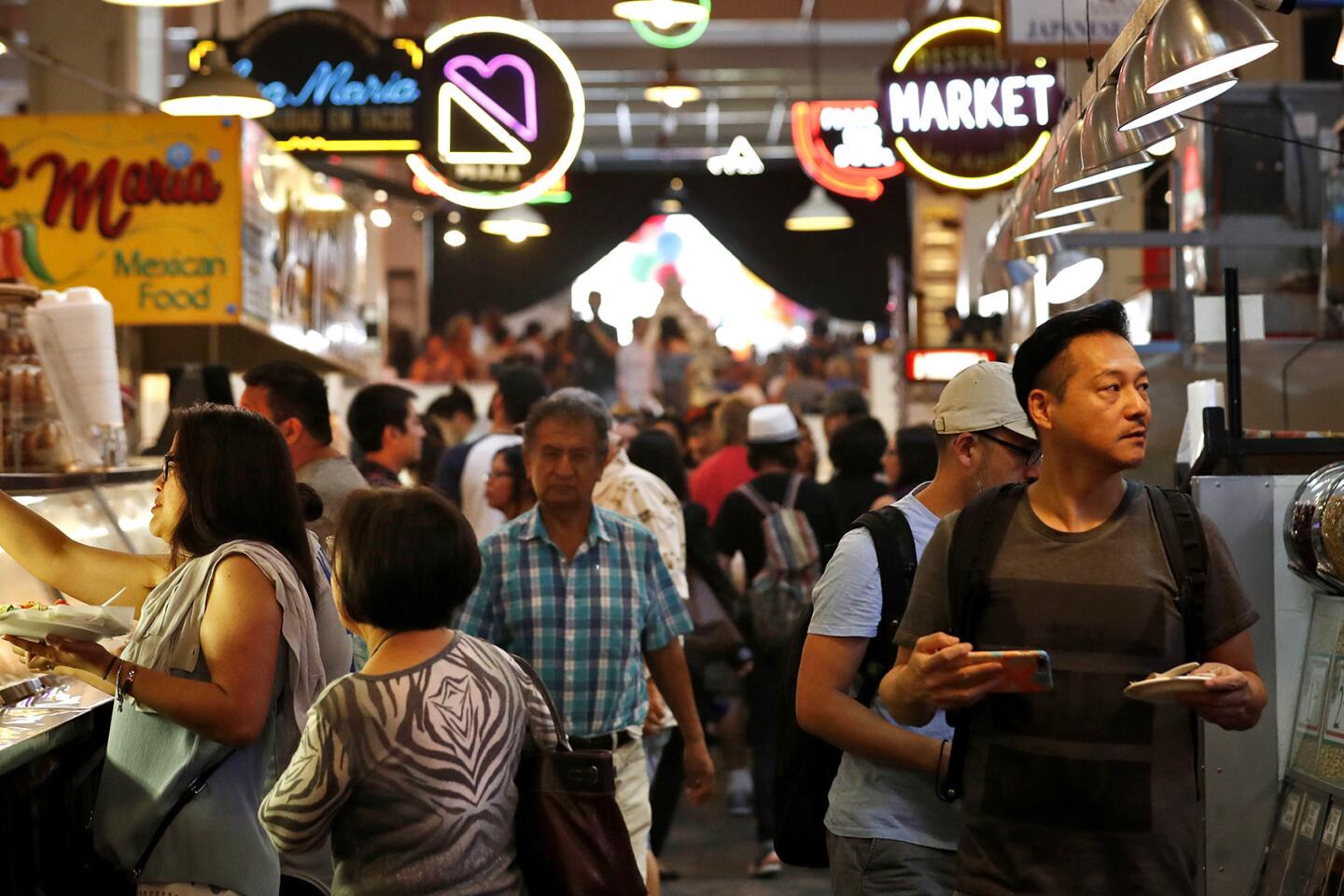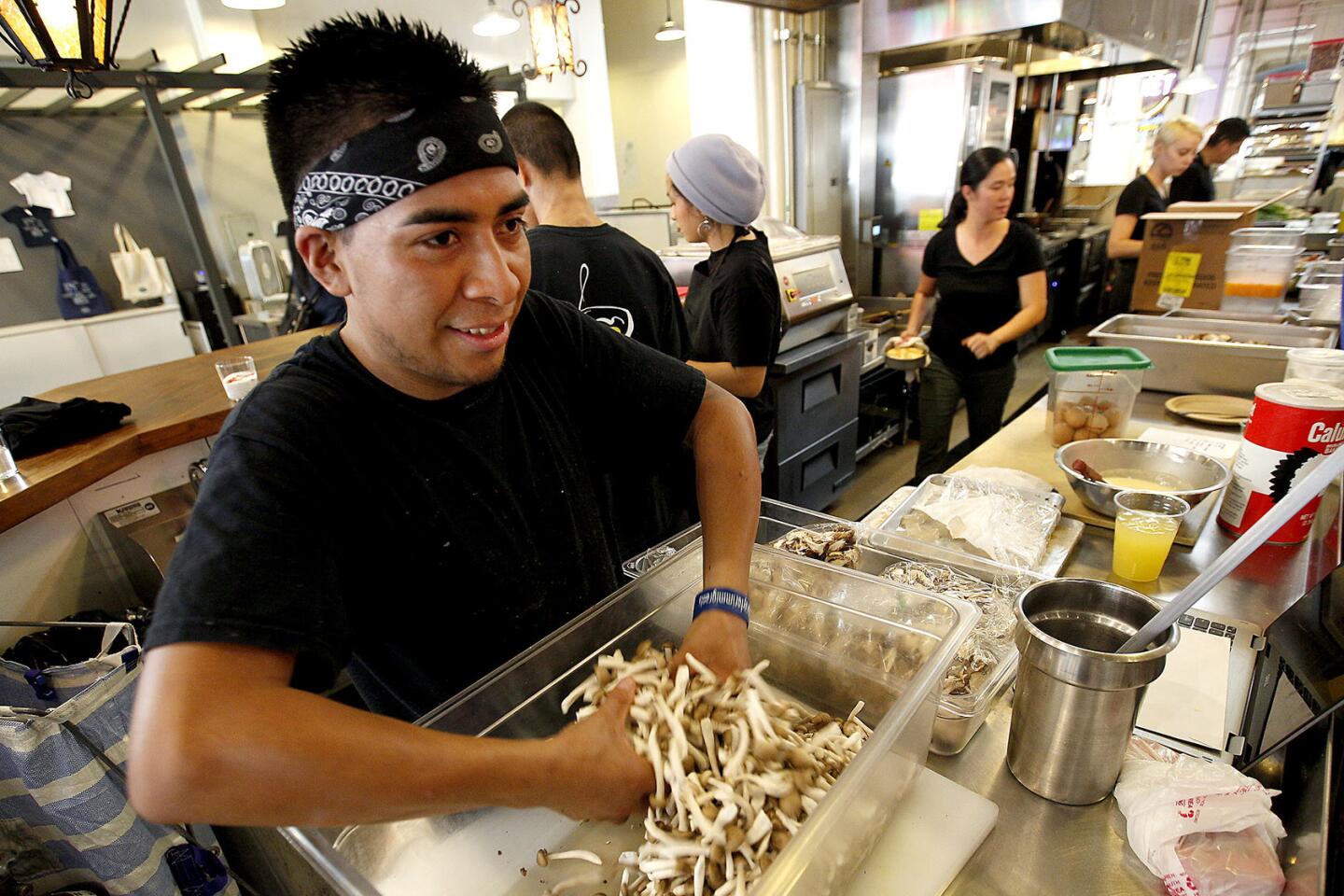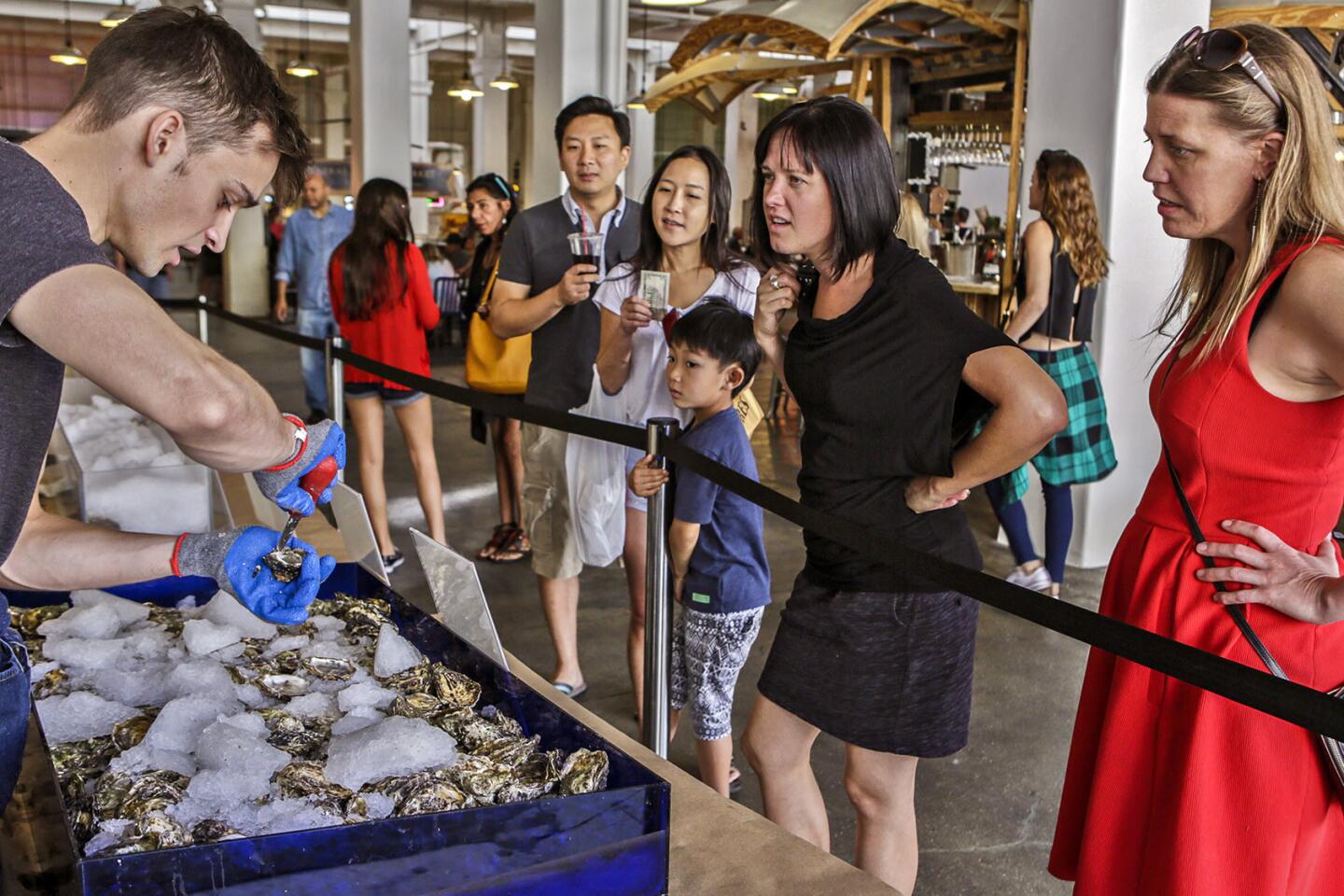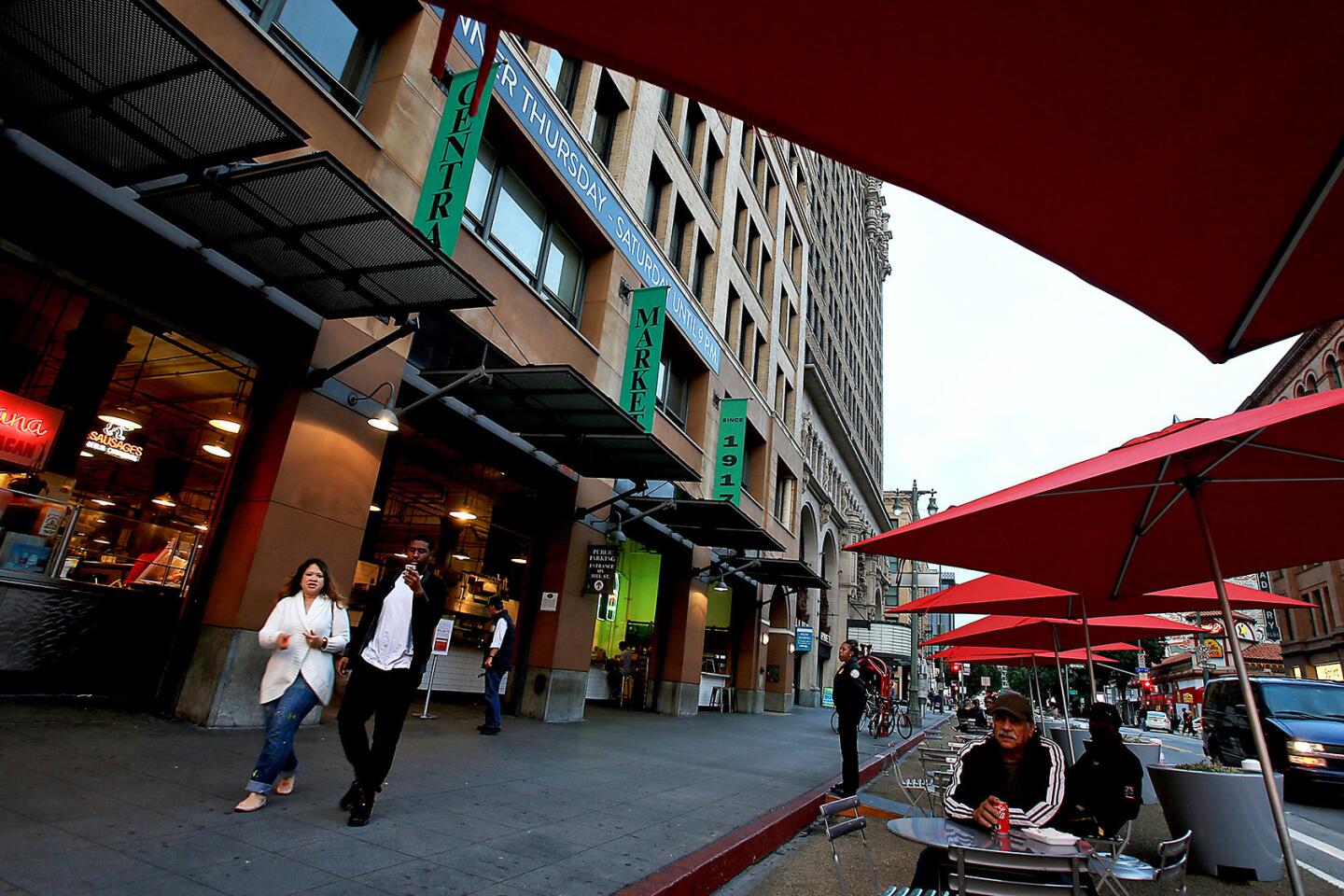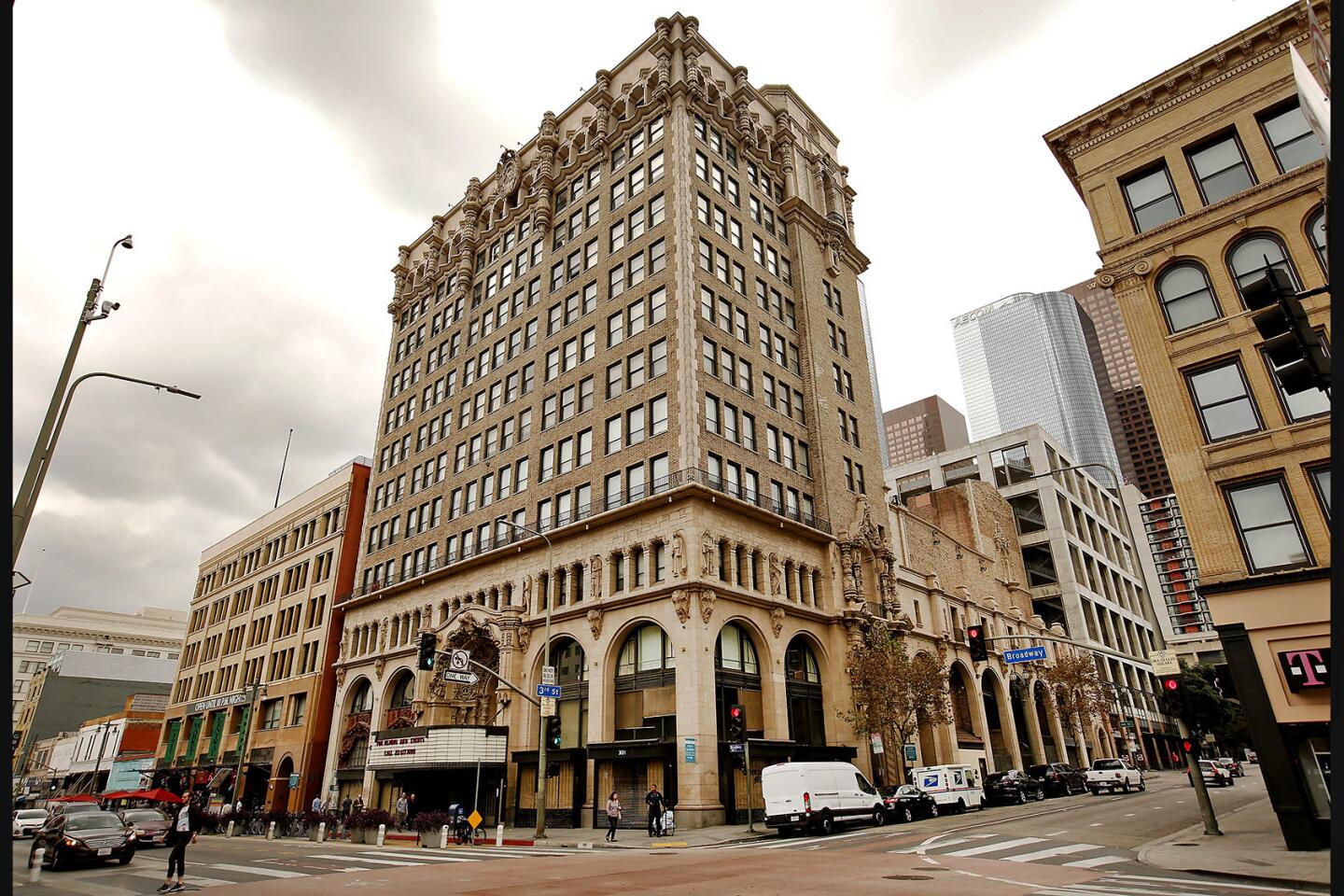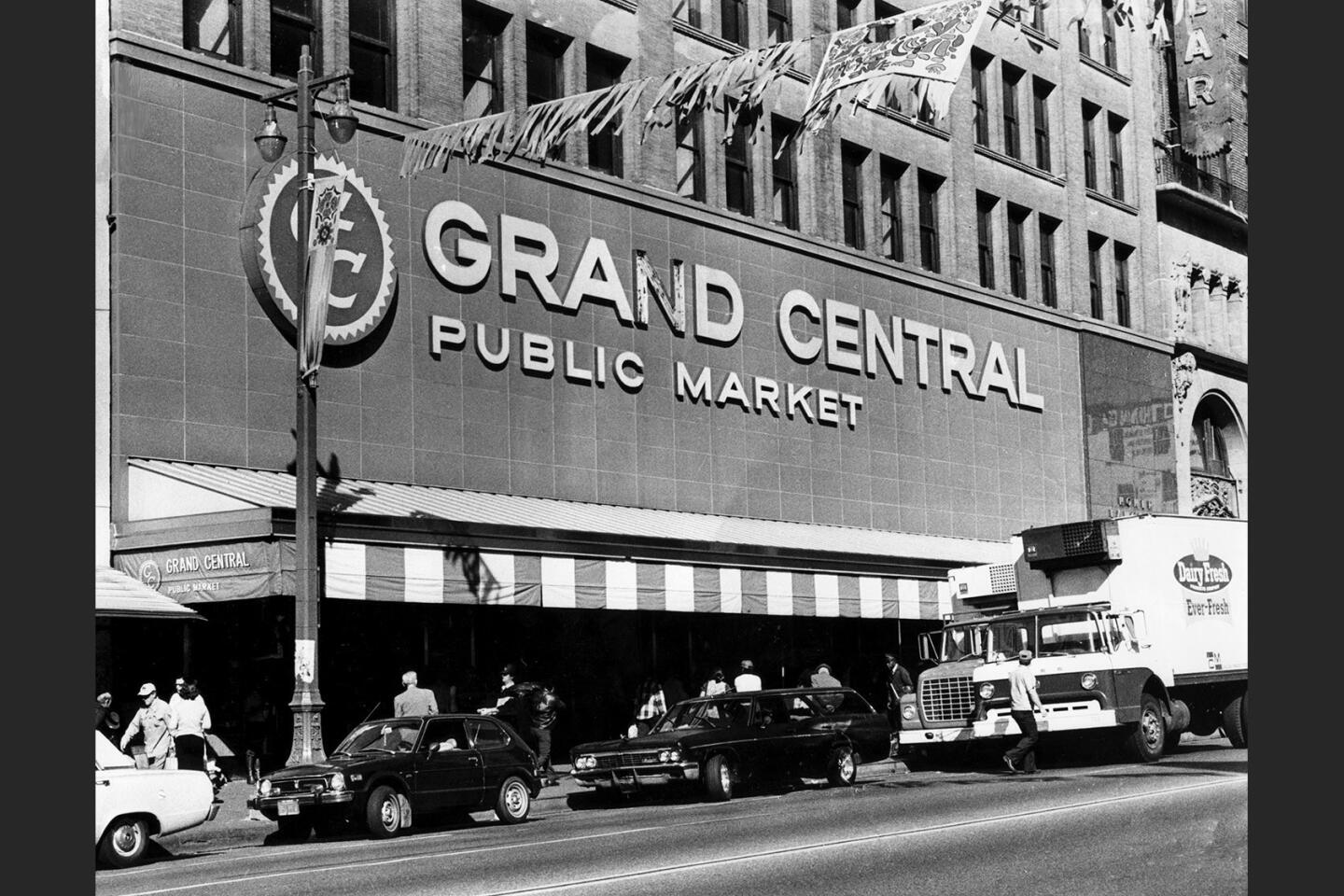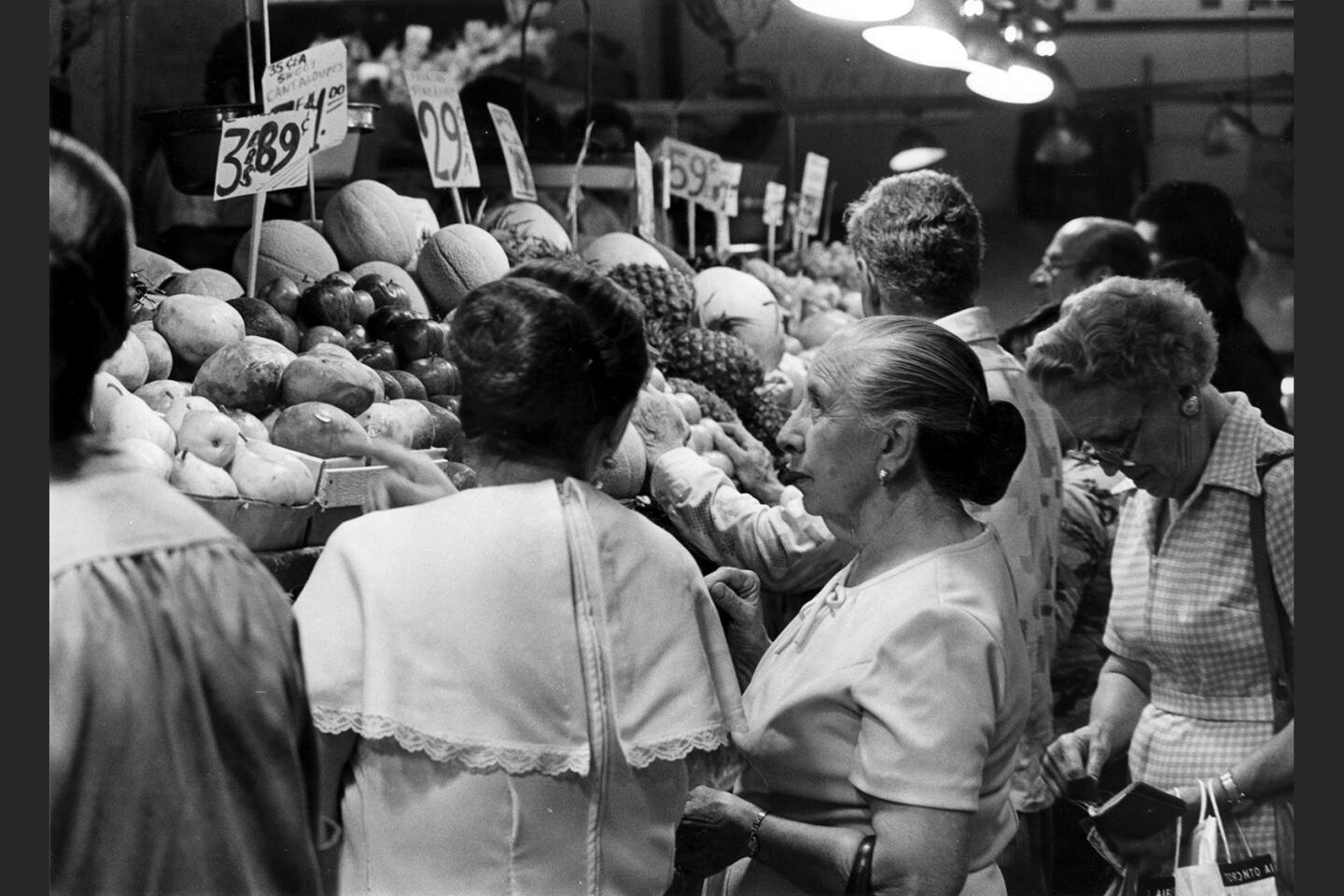Downtown’s historic Grand Central Market is sold to a local investor who promises few changes
- Share via
The bustling Grand Central Market, one of Los Angeles’ best-known cultural landmarks, has been sold to a Beverly Hills real estate investor who vows to preserve its historic charms.
The sale that closed Tuesday included the 12-story Million Dollar Theater tower next door, home to the first movie palace opened by entrepreneur Sid Grauman, who went on to create the famous Chinese and Egyptian theaters in Hollywood.
Grand Central Market, which celebrated its 100th anniversary last week, is a popular destination for locals and tourists who can choose a meal from dozens of food stalls or shop for produce, spices and other wares. It is open every day and draws 2 million visitors annually through its wide doors on Broadway and Hill Street.
“We just want to safeguard this place,” said new owner Adam Daneshgar, president of Langdon Street Capital. “We are not looking to go in and change or overhaul anything.”
Daneshgar declined to disclose how much his firm paid for the buildings. They had been owned since the mid-1980s by the Yellin Co., founded by the late Ira Yellin, an early pioneer of the downtown renaissance.
Yellin Co. President Adele Yellin, widow of Ira Yellin, declined to comment on the sale.
Daneshgar said he would spend “several million” dollars on maintenance and what he called “surgical” improvements such as painting the walls, cleaning the dusty skylights and updating the lighting. He said he may add one or two more stalls to the 40 existing ones.
The current tenants reflect both the market’s recent past as a place to buy inexpensive produce and hog maw tacos and its evolution to a more gentrified food hall selling pressed juice, artisan bread and craft beer.
Among the eateries is Chinese food purveyor China Cafe, which has been there since the 1950s, and well-reviewed new food stalls Wexler’s Deli and Sari Sari Store, which sells Filipino food made by a James Beard Award nominee.
“It’s a unique marketplace where you don’t just go to eat,” Daneshgar said. “You go there because it is an experience and you want to do something different, to soak it all in.”
The Million Dollar Theater, closed for years and last used as a church, will be reactivated by an undisclosed new tenant that will also control the building’s empty shops on Broadway.
For Daneshgar, 34, the acquisition of the market and theater buildings, which have a combined 400,000 square feet of space, marks a high-profile deal for a real estate investor with a low local profile.
He completed USC’s graduate-level real estate development program less than a decade ago and in 2011 began investing in properties that had been depressed in value by the recession. Daneshgar acquired apartment buildings in Las Vegas and moved on to buy retail, residential and office properties in California, New York and Texas.
“It’s put us in a position to pursue opportunities aggressively,” he said.
Daneshgar said he heard that Grand Central Market might be available and wrote a letter to Adele Yellin proclaiming his interest. It was, in real estate parlance, an unsolicited offer.
“She saw my passion and love for the project,” he said. “I assured her that our vision was aligned with hers and Ira’s.”
Ira Yellin was a pioneer of the current downtown renaissance. In the mid-1980s, Yellin, a lawyer with an academic interest in urban planning and historical preservation, bought not only the Grand Central Market but also the Million Dollar Theater and the Bradbury Building across Broadway.
All of them were landmarks in disrepair in a neighborhood that had grown disreputable, said Dan Rosenfeld, one of Ira Yellin’s former partners. Yellin spent millions of dollars to restore them at a time when other serious developers were building office skyscrapers on Bunker Hill and wanted nothing to do with Broadway.
“Ira put his money and his life on the line to start the cultural revitalization of downtown with some of the most significant and most challenging buildings,” Rosenfeld said. “He had a realization that something could happen in the heart of what we now call the Historic Core.”
The Bradbury Building, which dates from 1893 and houses a light-filled Victorian central court, is an architectural tourist destination that Yellin restored in the early 1990s. It is now owned by the U.S. affiliate of a Hong Kong investment firm.
The Million Dollar Theater, which opened in 1918, was one of the earliest and largest movie palaces in the country with more than 2,300 seats. The floors above the theater were offices until Yellin converted them to apartments. It was designed by Los Angeles architect Albert C. Martin Sr. in a lavishly embellished style known as Churrigueresque, according to the Los Angeles Conservancy.
Water engineer William Mulholland, who oversaw the construction of the Los Angeles Aqueduct in the early 20th century, once had his offices at the building, historian Greg Fischer said.
Ira Yellin died in 2002 and didn’t see the neighborhood’s comeback, but city officials honored him in 2003 by naming the intersection of Broadway and 3rd Street by the Million Dollar Theater Ira Yellin Square.
Lately, the area has begun to catch up with other resurgent downtown neighborhoods such as South Park and the Arts District.
A new federal courthouse was completed at Broadway and 1st Street in 2016. Canadian developer Onni Group plans to build two apartment skyscrapers across Broadway on a site now occupied by a former Los Angeles Times office building and garage. A subway stop is being built at 2nd Street and Broadway, and another developer plans to build a 30-story office and condominium tower on top of the station.
And across Hill Street from the market, developers are competing for the right to build a massive mixed-use complex on city land next to the base of Angel’s Flight railway that will reshape the city skyline.
“The Grand Central Market was the linchpin for that progress,” said real estate broker John Zanetos of CBRE.
Grand Central Market is in the Homer Laughlin Building, one of the city’s oldest commercial structures in continuous use. It was built to house offices over street-level retail.
The six-story portion facing Broadway was completed in 1897 by Laughlin, founder of the Homer Laughlin China Co. and one of the city’s richest men. In 1905 a second, shorter structure was built, extending the original building through to Hill Street, the Conservancy said.
The Ville de Paris department store was the primary tenant in the combined building until 1917, when it relocated and Grand Central Market moved in. Homer Laughlin Jr., Laughlin’s son, told The Times upon the market opening: “We are trying to build up an institution.”
Early ads for the market show merchants there sold a wide range of edibles, including baked goods, oysters, peanut butter and ice cream — all of which are for sale today.
Above the market are more apartments — the Laughlin and Million Dollar buildings have 121 units combined — and office space for rent. There is also a 500-car garage attached to the complex
“Just about every city in the world has had a colorful fresh-food market at its heart,” Rosenfeld said. “We’re really lucky ours survived.”
Twitter: @rogervincent
ALSO
Toyota headquarters in Torrance sold for $270 million to Irvine real estate developer
Downtown’s historic office buildings, once abandoned, are again drawing tenants
In L.A.’s Broadway Theater District, Chinese developer builds condos priced for first-time buyers
More to Read
Inside the business of entertainment
The Wide Shot brings you news, analysis and insights on everything from streaming wars to production — and what it all means for the future.
You may occasionally receive promotional content from the Los Angeles Times.
